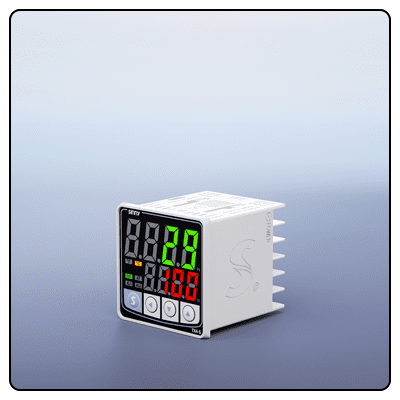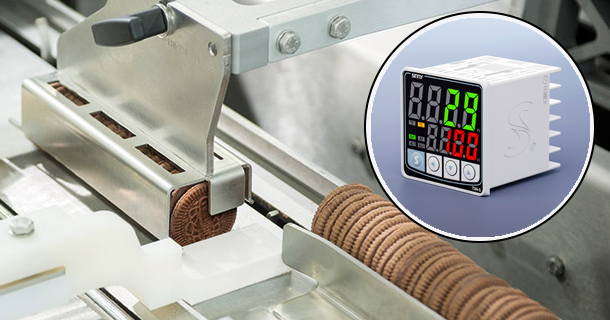How to Calibrate a Temperature Controller for Accuracy
You can use this comprehensive guide to accurately calibrate a temperature controller using the tools needed and calibration procedures and verification steps to achieve precise temperature regulation.
1. Introduction
Accurate temperature regulation is essential in industrial and laboratory settings for peak performance and safety, making calibration of temperature controllers an integral component of their use. Accuracy ensures readings from these devices remain as intended, thus creating ideal working environments. This article offers an in-depth guide for accurately calibrating a temperature controller, including necessary tools, steps during the preparation process, calibration procedure steps, and the calibration verification process.
Understanding Temperature Controller Calibration
Definition:
Calibration is the practice of configuring a temperature controller. Hence, it produces accurate readings by comparing its output with known standards to ensure it functions within its specified accuracy range. It provides reliable temperature regulation while upholding consistent and efficient operations.
Temperature Controller Types:
Various temperature controller types, from On/Off and Proportional controllers to PID controllers, are widely utilized due to their precise yet stable nature and are ideal for applications requiring accurate temperature regulation. PID controllers have become particularly popular.
2. Tools and Equipment Needed
Calibration Tools:
To calibrate a temperature controller, you will need the following tools:
• Multifunction Process Calibrator:
A device that can simulate temperature inputs and measure the controller's output.
* Standard Multimeter:
To measure electrical signals and verify controller output.
* Test Leads and Probes:
These leads and probes connect calibrator/multimeter units to temperature controllers, and they connect them seamlessly.
Safety Equipment:
When working in electrical environments, safety gear such as gloves is crucial to protect against potential electrical risks. Please always wear appropriate safety attire, including
* Gloves, to stay safe when you begin this work.
* Safety glasses protect from sparks or debris that might hit the eye during physical activities and may help avoid accidental eye injuries and face, neck, or head injuries.
3. Prep Work for Calibration
Setup:
To prepare for calibration, verify the temperature controller has been installed and connected correctly by following these steps:
1. Switch Off:
Switching the power off can reduce electrical risks. 2. Attach Calibration Tools: Secure a multifunction process calibrator and multimeter to the temperature controller with test leads or probes for accurate readings.
Stabilize Environment:
When calibrating, ensure the environment is free of temperature variations that could alter readings and lead to discrepancies between readings and actual measurements.
Initial Checks:
Before setting the controller live, conduct preliminary checks on its settings and performance:
1. Record Initial Temperature Readings:
Please remember any initial readings displayed by your controller.
2. Verify Sensor Connections:
Ensure all temperature sensors are securely attached and functioning effectively.
4. Calibration Procedure
Step-By-Step Guide for Calibrating Temperature Controller:
Strictly follow this list when calibrating your thermostat:
1. Simulate Temperature Inputs:
Utilize the multifunction process calibrator to simulate known temperature input into your controller.
2. Adjust Controller Settings:
Compare actual output against simulated input, then make necessary modifications based on known standards to achieve maximum performance against them.
3. Calibrating at Multiple Temperature Points: Calibrating at various temperature points across your range for accurate readings will guarantee precise results.
Zero and Span Calibration:
Zero and span calibration are crucial elements in the calibration process:
1. Zero Calibration:
Adjust the controller so it displays zero when an input hits its lowest point on its range, simultaneously with
2.Span Calibration whereby maximum value is displayed when the input hits the highest point in the range.
5. Recording and Verifying Calibration
Documentation:
Proper documentation of calibration processes is an indispensable element for future reference and verification: this documentation allows future users to recall procedures quickly.
1. Collect Calibration Data:
Document the settings, input values, and results from calibration activities performed within any period and with any personnel involved in their completion.
2. Maintain Calibration Logs:
Keep an up-to-date log of all calibration activities performed over any given period or personnel involved with their completion.
Verification:
Once calibrated, make sure you verify its accuracy by performing tests:
1. Execute "As Found" Test:
Evaluate pre- and post-calibration readings to measure their accuracy.
2. Perform Final Checks:
Confirm that your controller displays accurate readings throughout its temperature range.
6. Post-Calibration Steps
Final Checks:
Ensure all settings are correctly adjusted and the controller is functioning as expected:
1. Recheck Connections:
Verify that all sensor and tool connections are secure.
2. Monitor Performance:
Observe the controller's performance over a period to ensure stability.
Maintenance and Recalibration:
For long-term accuracy frequent recalibration and regular maintenance must take place to maintain long-term accuracy:
1. Scheduled Recalibration:
Establish a schedule for regular recalibration based on the manufacturer's recommendations and the application's requirements.
2. Routine Maintenance:
Perform routine maintenance checks to identify and address any potential issues.
7. Conclusion
Calibrating a temperature controller is a vital process that ensures accurate and reliable temperature control in various applications. By following the outlined steps, including preparation, calibration, verification, and maintenance, you can maintain the accuracy and performance of your temperature controllers. Regular calibration not only enhances the efficiency of your processes but also ensures safety and compliance with industry standar
- How to Maintain Your Temperature Controller Longevity
- Explore How to Design an Effective Temperature Control System























